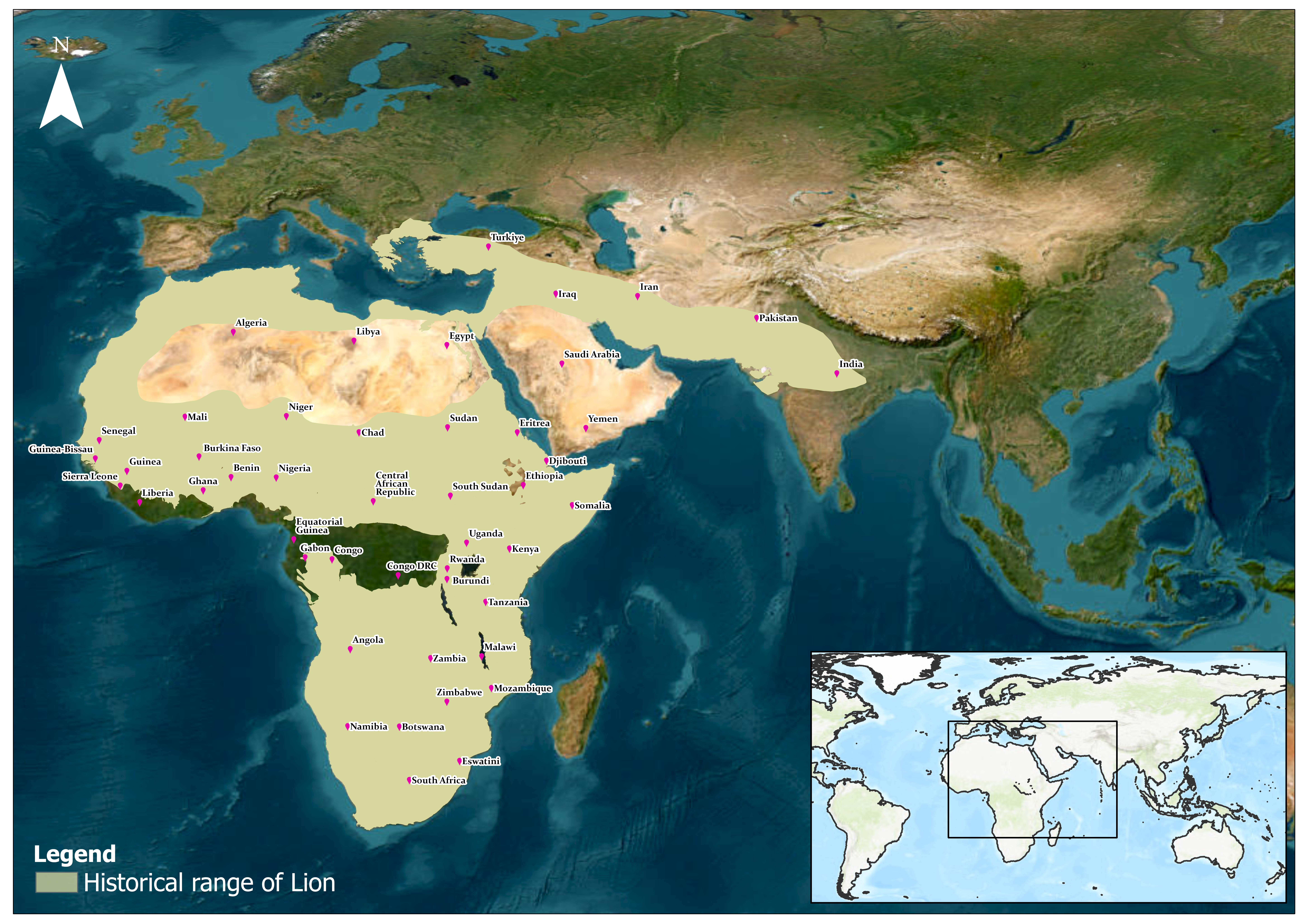LION
Phylum: Chordata
Class: Mammalia
Order: Carnivora
Family: Felidae
Genus and species: Panthera leo
Often depicted as the “King of the beasts”, lions are among the one of the most iconic big cats in the world. It is an apex predator and is second only to in size among felids.
.jpg)
Historically upto 11 subspecies of lions were proposed based on their physical characteristics like mane size and color. However, the last Felidae taxonomic revision in 2017 has consolidated these into two main subspecies:
- Northern lion (Panthera leo leo) : Populations of this subspecies are found in North, Central, and West Africa. This subspecies also includes the Asiatic lion and regionally extinct Barbary lion.
- Southern lion (Panthera leo melanochaita) : Covers the East and South African lion populations.
Lions are known for their muscular, broad-chested bodies, short, rounded heads, round ears, and a distinctive hairy tuft at the end of their tails. Coat colour varies from nearly white, buff yellow, orange-brown, or silvery grey to dark brown. Size and appearance vary considerably between the sexes. Adult male lions, distinguishable by their prominent manes, are larger than females. The size and weight of adult lions vary by region:
Asiatic lions can often be morphologically differentiated from African lions based on (a) skull characteristics, wherein the Asiatic lions have an extra infraorbital foramen, (b) a typical loose fold of skin on the abdomen known as the belly-fold which is absent in African lions, (c) facial characteristics of Asiatic lions, with a more elongated snout and a more sloping forehead; giving them a longer profile in lateral view in comparison to the African lions and, (d) males having sparser manes, never covering their ears The mane in the adult lion has the typical “mohawk” style look.
Estimated 23,000 – 39,000 individuals in Africa. About 700 individuals of Asiatic lions in Saurashtra peninsula of western Indian state of Gujarat.
Historically lions ranged across all of North America and Africa, through most of the Balkans, and across Anatolia and the Middle East into India. Current stronghold for lions are sub-Saharan Africa and an isolated population of Asiatic lions in Saurashtra peninsula of India.
Lions are adaptable to a variety of habitats but show a preference for grasslands, savannas, dense scrub, and open woodlands. They are primarily nocturnal and generally avoid thick canopied forests.
Lions are the most social of large cats and uniquely live in large groups called “prides.” A pride consists of several generations of related and unrelated lionesses which may be adults, sub-adults and dependent cubs and a smaller number of breeding males. Pride size varies from 3 to 40 individuals and depends on distribution and availability of major prey species.
Females usually stay in their mothers' prides for life while young males are driven from their prides usually between the ages of 2 to 4 years. They create coalitions, usually with brothers and cousins, and search for a pride to take over; or spend the entire life as nomads.


Lions predominantly hunt medium- to large-sized ungulates such as wildebeests, zebras, and antelopes. In Gir forests, they mostly hunt on ungulates such as sambar, chital, wild pig and nilgai. Lions are known to scavenge or forcefully steal kills from other predators such as leopards, hyenas, cheetahs or wild dogs.
African lions are listed as Vulnerable on the IUCN Red List due to a significant decline in their populations. This decline is attributed to habitat loss and conflicts with humans. Populations are largely untenable outside protected areas.
Population of Asiatic lions, on the contrary, are increasing over the recent years and therefore they have been downlisted by IUCN from ‘Endangered’ to ‘Vulnerable’.
Lions face several conservation threats that contribute to their declining populations in the wild. Some of the key threats include:
- Habitat loss and fragmentation
- Conflict with humans
- Poaching and trophy hunting
- Prey depletion
- Diseases
- Climate change
